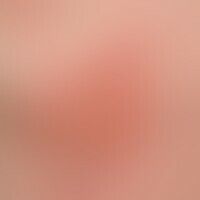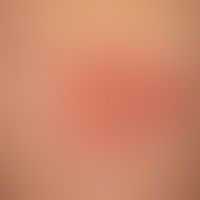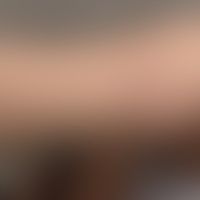Image diagnoses for "Plaque (raised surface > 1cm)", "red"
423 results with 1872 images
Results forPlaque (raised surface > 1cm)red

Psoriasis (Übersicht) L40.-
Psoriasis: Gutta type with acutely opened, small-focus formations, weeping scale superimpositions in the area of the periumbilical plaques.
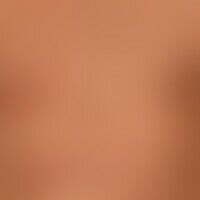
Lupus erythematosus acute-cutaneous L93.1
lupus erythematosus acute-cutaneous: clinical picture known for several years, occurring within 14 days, at the time of admission still with intermittent course. anular pattern. in the current intermittent phase fatigue and exhaustion. ANA 1:160; anti-Ro/SSA antibodies positive. DIF: LE - typical.

Pityriasis rosea L42
Pityriasis rosea: discreet macular or plaque-shaped exanthema with tender red spots and plaques arranged in the cleft lines.
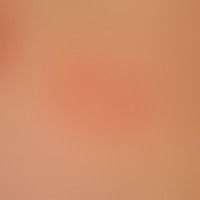
Erythema anulare centrifugum L53.1
Erythema anulare centrifugum: Characteristic single cell lesion with peripherally progressing plaque, which is peripherally palpable as well limited (like a wet wolfaden), flattens centrally and is only recognizable here as a non-raised red spot. DD Mycosis fungoides. Histological clarification necessary.

Tinea faciei B35.06
Tinea faciei. multiple, chronically active, since 4 weeks flatly growing, disseminated, 0.5-3.0 cm large, blurred, itchy, red, rough (scaling) papules and plaques as well as few yellowish crusts

Tinea inguinalis B35.6
Tinea inguinalis: plaques that have existed for several months, coarse lamellar scaling and moderately itchy. Mycological evidence of T. rubrum.

Mycosis fungoides C84.0
Special form: Mycosis fungoides, folliculotropic. 3-year-old clinical picture with strongly itchy, moderately sharply defined, follicular red plaques. secondary findings: multiple melanocytic nevi.

Dyskeratosis follicularis Q82.8
Dyskeratosis follicularis. infestation of the Rima ani. chronic, intertriginous, whitish sooty, blurred, macerated, superficially rough, clearly increased in consistency, itchy and unpleasant smelling plaques. peripherally the characteristic picture of dyskeratosis follicularis with disseminated red or red-brown papules. on the left side 2 melanocytic nevi.

Vasculitis leukocytoclastic (non-iga-associated) D69.0; M31.0
Vasculitis, leukocytoclastic (non-IgA-associated). multiple, acute, symmetric, since 2 weeks existing, localized on both lower legs, irregularly distributed, 0.1-0.2 cm large, sharply defined, symptomless, hemorrhagic spots and blisters as well as beginning incrustations.

Larva migrans B76.9
Larva migrans. linear plaque, subepidermally situated, tortuous, constantly itching gait on the right hollow foot. conspicuously in the area of the gait structures described blister formation.
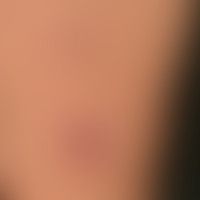
Sarcoidosis of the skin D86.3
Sarcoidosis, subcutaneous nodular form:known pulmonary sarcoidosis; skin findings: subcutaneously and cutaneously located nodules and plates which can be easily distinguished from the surrounding area and which slide on the support.

Lupus erythematosus acute-cutaneous L93.1
Lupus erythematosus acute-cutaneous: symmetrical red spots, patches and plaques in the face, neck and upper trunk areas that have been present for several weeks.

Papillomatosis cutis lymphostatica I89.0
Papillomatosis cutis lymphostatica:large-area, distally sharply defined, proximally tapering, coarsely indurated, large-area, verrucous plaque with smaller nodules; condition following recurrent erysipelas.

Tinea corporis B35.4
Tinea corporis:Acute, solitary, ring-shaped, approx. 2.5 cm large, sharply defined, itchy plaque, which has existed on the right wrist for several weeks, is increased in consistency at the edge and has fine lamellar scales, and has healed centrally in a 12-year-old girl (pathogen: Mikrosporum canis).

Erythema multiforme, minus-type L51.0
erythema multiforme: post-herpetic erythema multiforme. here a healing phase with coarse lamellar scaling plaques. therapeutically only local nursing measures are necessary
